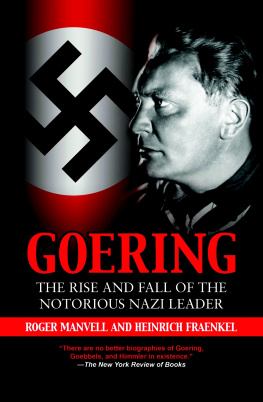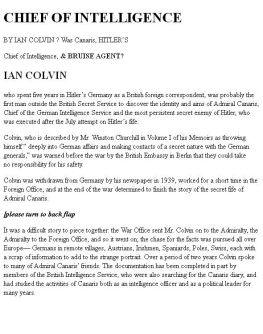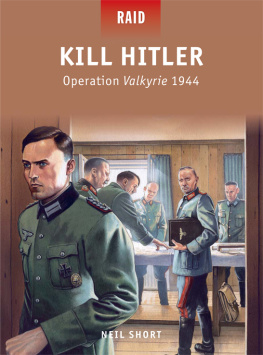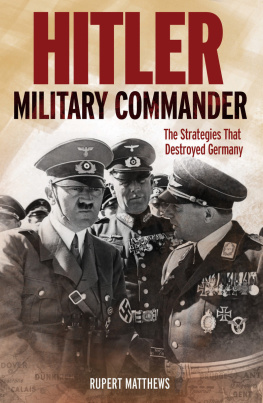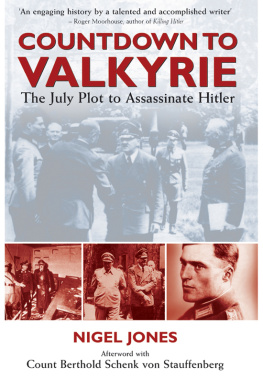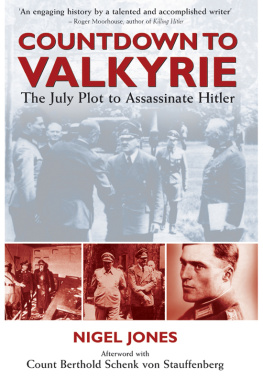


Copyright 1969 by Hennerlon Productions and Heinrich Fraenkel
First Skyhorse printing 2018.
Originally printed in 1972 by Pinnacle Books.
All rights reserved. No part of this book may be reproduced in any manner without the express written consent of the publisher, except in the case of brief excerpts in critical reviews or articles. All inquiries should be addressed to Skyhorse Publishing, 307 West 36th Street, 11th Floor, New York, NY 10018.
Skyhorse Publishing books may be purchased in bulk at special discounts for sales promotion, corporate gifts, fund-raising, or educational purposes. Special editions can also be created to specifications. For details, contact the Special Sales Department, Skyhorse Publishing, 307 West 36th Street, 11th Floor, New York, NY 10018 or info@skyhorsepublishing.com.
Skyhorse and Skyhorse Publishing are registered trademarks of Skyhorse Publishing, Inc., a Delaware corporation.
Visit our website at www.skyhorsepublishing.com.
10 9 8 7 6 5 4 3 2 1
Library of Congress Cataloging-in-Publication Data is available on file.
Cover design by Paul Qualcom
Print ISBN: 978-1-5107-3978-9
Ebook ISBN: 978-1-5107-3979-6
Printed in the United States of America
CONTENTS
Acknowledgments
Contact has been made by the authors with every principal survivor of the resistance movement within the Abwehr, the department of German Military Intelligence during the Hitler rgime, as well as with the families of those leaders who were arrested and executed. During 1965 Heinrich Fraenkel learned of the survival of Hans von Dohnanyis private letters and memoranda, which were smuggled out of prison and which his widow, who died in 1966, fortunately preserved. They are now in the hands of Pastor Eberhard Bethge, Bonhoeffers close friend and biographer, who has most generously put this completely new material at our disposal with the permission of members of Dohnanyis family. The more we studied the subject, the more we came to the conclusion that the heroic Dohnanyi represents one of the principal links in the network of German resistance, both civilian and military, prior to the sudden emergence of Stauffenberg as the youthful leader of the July plot of 1944.
Much new material has come to light since 1953, when Sir John Wheeler-Bennett wrote The Nemesis of Power, his comprehensive study of resistance in the German Army, and since the publication, in 1949 and 1951 respectively, of the pioneer biographies of Canaris by Abshagen and Colvin. (The book formerly considered the authority on the subject, The Downfall of the German Secret Service (1956) by the late Karl Bartz, has proved to be nothing but a whitewash for Wilhelm Schmidhuber, the man whose interrogation led to that downfall.) In compiling our book, we have drawn on this new material, adding it to the detailed valuable evidence which the survivors themselves of the inner circle of the German resistance movementhave been able to give us, in particular Josef Mller, Achim Oster (son of General Oster), Frau Anni Oster, Otto John, members of the Dohnanyi family, and Dr. W. W. Schrader (son of Colonel Werner Schrader). We have also taken statements from the former Nazi officials Dr. Werner Best and Dr. Manfred Roeder. Much unpublished documentation, including the records of the Gestapos examination of suspected persons after the attempt on Hitlers life in 1944, and the affidavits made after the war before and during the investigations of Roeder and the successive trials of Huppenkothen and Sonderegger has been put at our disposal. In addition, through the courtesy of the Freiburg Military Archives certain of the then unpublished Grosscurth papers were made available to us whilst we were writing this book.
We are deeply indebted to Professor Harold C. Deutsch of the Department of History, University of Minnesota, who, when our book was already completed, allowed us to study the typescript of his own recently finished work, The Conspiracy against Hitler during the Twilight War.This most scholarly and detailed study covers the key years in the German resistance movement, 1938-1940, and is the result of some ten years research. In particular, Professor Deutsch has sifted the details of Dr. Josef Mllers negotiations at the Vatican and was able to discuss them with the late Father Leiber. Although Dr. Mller has over a period of years given us similar evidence, we benefited greatly from being able to read Professor Deutschs meticulous elucidation of fact and conjecture.
We would like to express our gratitude to all those who have helped us; in addition to those named above, we should like to thank Dr. Hoch of the Institut fr Zeitgeschichte at Munich, Dr. Arenz of the Military Archives at Freiburg, Mrs. Anette Pringle at the Wiener Library in London, and Mrs. Patricia Newnham of William Heine-mann Ltd.
ROGER MANVELL
HEINRICH FRAENKEL
The Principals
involved in this story of the German resistance to Hitler:
The Abwehr (Amtsgruppe Ausland/Abwehr), German Military Intelligence:
CANARIS, Admiral Wilhelm (1887-1945). From 1935 to 1944 Chief of Military Intelligence attached to the High Command. Leading member of the resistance; arrested 23 July 1944, and hanged in Flossenbrg concentration camp 9 April 1945.
DOHNANYI, Hans von (1902-45). Dietrich Bonhoeffers brother-in-law. Introduced into the Abwehr by Canaris in August 1939, and became leading administrator in the resistance and its legal adviser. Arrested April 1943; executed April 1945.
OSTER, Major-General Hans (1895-1945), Chief of Staff at the Abwehr and a principal organizer of the resistance. Suspended from duty in April 1943; arrested after the bomb attempt of 20 July 1944 and executed 9 April 1945.
Principal agents attached to the Abwehr for the purpose of resistance:
BETHGE, Pastor Eberhard. Closely linked through marriage to the Bonhoeffer family. Arrested in September 1944; liberated in May 1945 at the end of the war.
BONHOEFFER, Pastor Dietrich (1906-45). Eminent scholar and teacher. Attempted to make contact with the British on behalf of the resistance through Bishop Bell of Chichester in Sweden, May 1942. Arrested April 1943; executed April 1945.
MLLER, Josef (b. 1898). A lawyer, and one of the leading Catholic agents of the conspiracy. Used his connections at the Vatican in an attempt to enlist Allied support during the early stages of the war. Imprisoned from 1943 until his liberation at the end of the war.
The Army: the principal malcontents:
BECK, Colonel-General Ludwig (1880-1944). Chief of the Army General Staff until his resignation in 1938 in protest against Hitlers policy. Recognized by all as head of the resistance, and nominated to become Head of State after the coup dtat. Died, following an attempt at suicide, 20 July 1944.
HALDER, Colonel-General Franz (b. 1884). Chief of the Army General Staff 1938-42. In touch with the resistance, though he gradually withdrew from direct contact during the war period. Arrested July 1944, but not brought to trial. Liberated at the end of the war.
KLUGE, Field-Marshal Guenther von (1882-1944). After a command on the Eastern front, became Army Group Commander in France. In spite of the uncertainty of his support for the resistance, it was hoped to the end that he would come out on the side of the conspirators. Finally refused his support when Hitler survived the attempt of July 1944. Fearing arrest, committed suicide on 19 August of that year.
Next page


